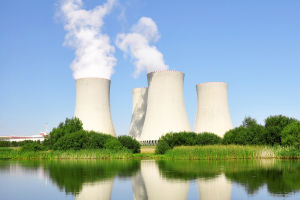Have you ever found a rusty nail in your toolbox or noticed reddish patches on an old bike? That brownish-red coating is rust, and it's far more than just a cosmetic problem.
Rusting is a fascinating natural process that's both a nuisance and a crucial topic in chemistry and engineering. So, what actually causes iron to rust, and how can we prevent it? Let's dive into the science behind this common yet remarkable transformation.
What Is Rust?
Rust is a type of corrosion—specifically the corrosion of iron. It occurs when iron reacts with oxygen and moisture in the environment, leading to the formation of iron oxides. The most familiar form of rust is iron(III) oxide-hydroxide (FeO(OH)·Fe(OH)₃), which gives the surface that flaky, reddish-brown appearance.
Rust doesn't just sit there—it weakens the structure of metal, making it brittle and, over time, useless. That's why understanding how rust forms is so important.
The Rusting Reaction Explained
At its core, rusting is a chemical reaction between iron (Fe), oxygen (O₂), and water (H₂O). Here's what's happening on a molecular level:
1. Iron loses electrons to form iron ions (Fe²⁺).
2. Oxygen molecules in the presence of water accept those electrons and form hydroxide ions (OH⁻).
3. These ions then combine to form iron oxides—commonly known as rust.
The simplified chemical reaction looks like this:
4Fe + 3O₂ + 6H₂O → 4Fe(OH)₃ → Fe₂O₃·nH₂O (rust)
This is an example of an oxidation-reduction (redox) reaction. Iron is oxidized (loses electrons), and oxygen is reduced (gains electrons), leading to the formation of rust.
Why Water Accelerates Rusting?
Water is not just a bystander in this reaction—it's an essential ingredient. Moisture provides the medium through which ions can move, enabling the redox reaction to occur more efficiently. That's why iron rusts faster in humid climates or when left in contact with water.
But there's more: if the water contains electrolytes like salt (as in seawater), the rusting process speeds up significantly. Saltwater enhances electrical conductivity, allowing electrons and ions to move faster, which accelerates corrosion.
Why Some Metals Don't Rust?
You might wonder why iron rusts but metals like aluminum or stainless steel don't. The answer lies in the way these metals interact with oxygen.
• Aluminum reacts quickly with oxygen, but instead of forming flaky rust, it forms a thin, hard layer of aluminum oxide that protects the metal underneath.
• Stainless steel contains chromium, which also forms a protective oxide layer, preventing oxygen and moisture from reaching the iron inside.
These protective layers act like invisible shields, stopping further corrosion from happening.
Real-Life Examples of Rust
Rusting isn't just a problem for garden tools and old cars—it affects major industries and infrastructure. Bridges, ships, pipelines, and railroads are all vulnerable to rust if not properly protected. In fact, experts estimate that billions of dollars are spent globally each year to repair or replace rusted materials.
One famous example is the Brooklyn Bridge in New York, which has undergone extensive anti-corrosion maintenance to ensure its steel cables and structure remain strong.
How to Prevent Rust?
Luckily, we have many ways to protect iron and steel from rusting:
• Painting: A coat of paint acts as a barrier between the metal and air/water.
• Galvanizing: Coating iron with a layer of zinc prevents oxygen and moisture from reaching the surface. Zinc also acts as a sacrificial metal, corroding in place of iron.
• Oiling or Greasing: Lubricants keep water and air away from the metal.
• Stainless Alloys: Using iron mixed with chromium, nickel, or other elements helps build rust-resistant materials.
Rust in Nature and Biology
Interestingly, rust-like processes also happen in nature and even inside the human body. For example, the body carefully controls iron levels because, in excess, free iron can trigger reactions similar to rusting, damaging cells. That's why iron in the bloodstream is tightly bound to proteins like hemoglobin or stored in safe forms like ferritin.
Scientists even study rust formation in nature to develop better materials and understand the degradation of ancient artifacts.
The Environmental Impact of Rust
While rust itself is non-toxic, it can lead to serious environmental consequences. For example, rusting pipes can contaminate drinking water with iron particles or cause leaks in oil pipelines. To combat this, engineers and environmental scientists use corrosion monitoring systems and special coatings to extend the life of infrastructure and protect the environment.
Rust Is a Reminder
Rust is more than a nuisance—it's nature's way of reclaiming metal. It reminds us that even strong materials like iron are temporary when exposed to the elements. However, by understanding how rust works and how to prevent it, we can build safer, longer-lasting tools, structures, and technologies.
Conclusion: Look Closer at Rust
Next time you see a rusty bolt or bike chain, take a moment to think about the invisible chemistry at work. Rust may seem simple, but it reflects powerful natural processes that affect everything from your home toolbox to global transportation systems.
Have you ever tried removing rust or protecting something from corrosion? What methods worked best for you? Share your experience—you might inspire someone to look at rust in a whole new way!


